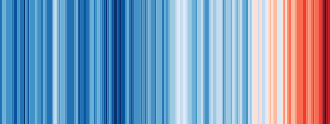
Back اتصالات مناخية Arabic Comunicación sobre el cambio climático Spanish ارتباطات اقلیمی Persian Ilmastoviestintä Finnish Communication sur le climat French 氣候傳播 Chinese

Climate communication or climate change communication is a field of environmental communication and science communication focused on discussing the causes, nature and effects of anthropogenic climate change.
Research in the field emerged in the 1990s and has since grown and diversified to include studies concerning the media, conceptual framing, and public engagement and response. Since the late 2000s, a growing number of studies have been conducted in countries in the Global South and have been focused on climate communication with marginalized populations.
Most research focuses on raising public knowledge and awareness, understanding underlying cultural values and emotions, and bringing about public engagement and action. Major issues include familiarity with the audience, barriers to public understanding, creating change, audience segmentation, changing rhetoric, public health, storytelling, media coverage, and popular culture.
- ^ Hawkins, Ed (4 December 2018). "2018 visualisation update / Warming stripes for 1850–2018 using the WMO annual global temperature dataset". Climate Lab Book. Archived from the original on 17 April 2019. (Direct link to image)